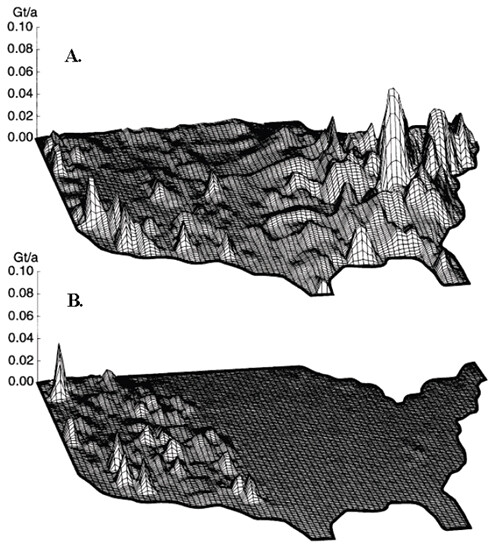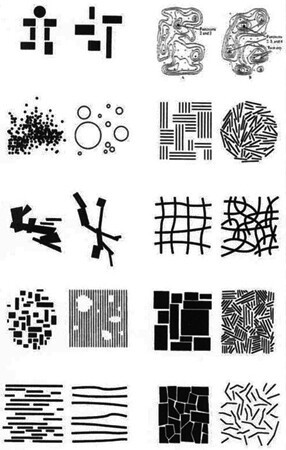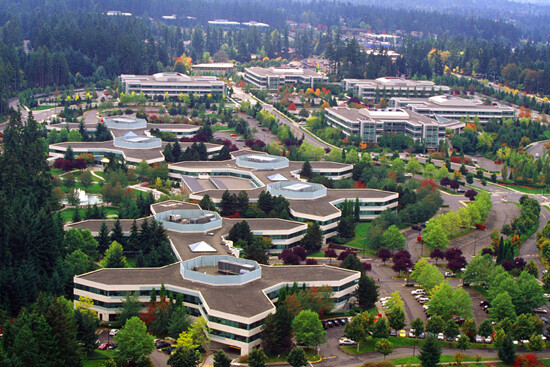→ Continued from “Notes on the Inorganic, Part I: Accelerations”
Three pages from the end of his Post-Cinematic Affect, a book that treats recent audiovisual productions as mappings of the spaces and affective modulations of neoliberal capitalism, Steven Shaviro finally names what he has been making a case for throughout the book: “accelerationist aesthetics.”1 Coined by Benjamin Noys, “accelerationism” is the name that has been given to a political tactics that comes down from Deleuze & Guattari, the Lyotard of Libidinal Economy, Nick Land, and others.2 Embracing capitalism’s penchant for always undoing more and more in its quest for self-perpetuation and growth, for treating any blockage as an incentive to crank up its rhythms, accelerationism experiments with the possibility of speeding up and intensifying capitalist relations and ways of living, exacerbating its dissolutions and its velocities, until something breaks. Accelerationism aims to rev up crisis and render it unsustainable, to pipe even more energy into processes of social fracture, to exacerbate the fragmentation of experience, and to intensify sensorial overload and subjective dispersal in order to drive masochistically toward an incompatibility between capitalism and forms of excess it can’t accommodate. Counterintuitive for kids brought up on the delights of critique and its penchant for refusing complicity with the dominant order, one no longer resists these tendencies. Instead, one accelerates until the scaffolding and the logic that hold it all together burst asunder. Hyperactive production is recoded as turbo-destruction and vice versa.3


1. Sticky Ambiance
Shaviro’s project revolves around an effort to understand, to affectively and cognitively map, four important elements or “‘diagrams’ of the contemporary social field,” from Deleuze’s control society to the delirious financial flows of neoliberal economies.4 He maps these through the prism of specific audiovisual objects, with the goal of “develop[ing] an account of what it feels like to live in the early twenty-first century.”5 He finds, for instance, in Olivier Assayas’s Boarding Gate (2007) a film that can “shock us into a heightened awareness of the new configurations of social and narrative space that have emerged in the last thirty years or so, along with the rise of digital technologies, and with the post-Fordist, neoliberal reorganization of capitalism.”6 Shaviro finds that the film’s ability to transduce the “impalpable flows and forces of finance into images and sounds” resides in a number of factors: its quality as a “convoluted and circuitous” thriller with an unclear and menacing ending; its challenge to “linear causality and narrative logic”; the roaming and hyperactive camera that can’t accommodate long takes because the very ontological qualities of forces and flows can’t be “captured” in this way; the use of the “service industries” of prostitution, murder for hire, and drug dealing as stand-ins for the immaterial labor and the dissolution of the work/leisure distinction that characterizes cognitive capitalism; the way in which Assayas moves his protagonist, Sandra (played by Asia Argento), such that she becomes tightly bound to the atmosphere of the spaces she traverses.
The film has no general ambience that is transmitted from one space (say, from an import/export company’s warehouse in one scene) to another (a luxury apartment in a different scene). There is only a range of distinct atmospheres, and each one is inseparable from the space in which the characters find themselves. This creates a certain claustrophobic quality, a constricting tightness between bodies and ambiances, and this, Shaviro points out, begins to diagram the fundamental paradox or Antinomy of neoliberal globalization: if the space and movement of transnational capital is abstract and seemingly disembodied, it is also “suffocatingly close and intimate,” “hyperbolically present.”7 It is constantly affecting our bodies and modulating our subjectivities.
Perspectival models are found wanting before this “hyperbolically present” space—in the movie and in our everyday lives. An intuition that certain architects (like Stan Allen) have been attempting to unpack for decades in relation to their practice becomes generalized: space is not homogenous, empty, neutral, and isomorphic. Instead, it’s defined by forces, by site conditions, by intensifications and densifications. Space is not something to be filled, but something that is defined by investments and retrievals of energy. And so, spaces become atmospherically singular, and our bodies, even as they answer the injunction to disperse themselves into digital networks, are incessantly phenomenologically engaged. Maybe not engaged in the same way as before, when the world was structured by industry and cinema and trench warfare, since bodies are now swept into currents and passed through transmissions, swayed by ungraspable forces and rendered productively flexible by new regimes of labor. Bodies are now engaged in such an unprecedented way that even as we speak of diffused and disembodied experiences we know this isn’t enough to describe the multilateral stimuli that assail us and recode us incessantly. We can’t escape the awareness of our corporeality—its dissolutions and condensations—or of the atmospheric qualities that stick to it, the ambient modulations that constantly perturb it, even if we are still learning how to describe these new exchanges. Space for us has become, as Shaviro writes, “vividly tactile.”


A paradox (which perhaps restates metaphorically the larger Antinomy that the film diagrams) is that the spaces through which the protagonist moves are generic spaces—seaports, warehouses, work lofts, storage buildings, indoor stall markets, airports and airplanes, parking garages, pre-fab offices. These spaces are both saturated with a particular ambience and completely de-particularized in their blah-ness and lack of identity. They are “without qualities” and altogether with qualities; they are, paradoxically, homogenous yet distinct and disconnected. Shaviro relates them to both what anthropologist Marc Augé has termed “non-spaces” and what Deleuze calls “any-space-whatevers.”8
Non-spaces, for Augé, are spaces that are not historical, relational, or concerned with identity. They lack characterization and are always stamped with instructions (“This line for foreign nationals,” “No Smoking,’” ubiquitous arrows and other ideograms, etc.). They exist to fulfill very specific ends—think of transportation terminals or ATM kiosks or entire railway systems. Non-spaces tax any sharp distinction between architectural object and infrastructure. They are also spaces that do not integrate previous places, in contrast to modernist practices that reconcile with a past to which they no longer belong (as in Joyce’s constant references to church liturgy). It is this indifference towards reconciliation with the past—except as a theme-park curiosity to be mined for profit—that makes them emblems of a supermodernity. For Augé,
non-places are the real measure of our time; one that could be quantified—with the aid of a few conversions between area, volume, and distance—by totaling all the air, rail and motorway routes, the mobile cabins called “means of transport” (aircrafts, trains, and road vehicles), the airports and railway stations, hotel chains, leisure parks, large retail parks, and finally the complex skein of cables and wireless networks that mobilize extraterrestrial space for the purposes of communication.9
A place “is formed by individual identities, through complicities of language, local references, the unformulated rules of living know-how; non-place creates the shared identity of passengers, customers, or Sunday drivers.”10 That is, they “fabricate” (to use Augé’s term) an average subject, a generic individual, not so much permeated and forged by a particular culture as determined by injunctions, instructions, and whatever information is encoded in his/her credit cards and printed on his/her tickets.
The any-space-whatever, as it was originally conceptualized, is different from the non-space. It doesn’t begin as a space devoid of certain qualities or erected with a very narrow end in mind. Rather, under certain conditions, it “de-laminates” from the temporal and historical coordinates that define it. The any-space-whatever practices a kind of becoming-generic in the sense that it eradicates whatever identity was inscribed on it by unplugging from “that which happened and acted” in it, thus disallowing certain habitual connections and ways of thinking, dismantling established orders, and clearing the way for unexpected and latent potentials to be actualized. In his Cinema books, Deleuze finds radical potential in the any-space-whatever.
Shaviro argues that this radical potential has now been eradicated, as a multitude of spaces and architectures take on the blank, “unplugged” quality of any-space-whatevers. They make permanent and essential, reproducible and quantifiable, extended and irrevocable, the momentary “de-lamination” of a space from its temporal and historical coordinates. The difference between the any-space-whatever and the non-space of supermodernity has eroded. The non-space of the ATM kiosk is no different from the collection of any-space-whatevers that constitute the cookie-cut corporate campuses of Omaha, Nebraska; Mumbai; and Santiago—both float freely, severed from their contexts, structured for particular ends. And if Deleuze once found potential any-space-whatevers in “undifferentiated urban tissue [with] its vast unused spaces” in the abandoned edges and terrains vagues of the city, Shaviro just as readily finds them in the new sad never-neverlands of corporate architecture. In fact, Shaviro proposes that the de-differentiation of the any-space-whatevers now extends to the fact that
the “deconnection” and blankness of urban spaces is as much a result of intensive capital investment, as it is of capital flight. The ruins of old Detroit, and the new business and luxury towers of Shanghai and Dubai, are two sides of the same coin.11


2. Negative Imprints of the Sublime
These emasculated any-space-whatevers and their proliferating “ruins”—forlorn illustrations of bankruptcy or outsourcing—rise as necessary correlates to a canalization of the corporate system itself. If once the concerns and investments of the average corporation were distributed to different fronts, responding in some measure to social forces registered in local populations and workforces, now, as Sanford Kwinter has written,
the pure movement of resources becomes the central, spontaneously defined goal, without any of the viscosity of social forces, traditions, or specificities of place, time, or context. What emerges more and more is a developmental ethos that does not hesitate to declare itself a kind of new mathematical sublime: this landscape, with its engineered beams, boxes, piles, glacis, and equipment parks, offers itself as the pure, one-dimensional result of numbers, algorithms, and protocols crunched … elsewhere.12
But the sublime here is not only in the embodied equations, a kind of roboticized mathematics as design, or even in the sheer scale of multiplying units with minimal variance. As Kwinter goes on,
Modern development no longer fixes on single buildings, but rather on extended production units that typically number into the hundreds, cutting—and within months, filling—swathes through the landscape that, until recently, corresponded to centuries of development in time and entire cities in scope.13
The sublime is found in the way that “de-lamination” now happens not between a space and its historical coordinates and physical metrics, but between building production and its anthropomorphic coordinates. Generic buildings are reproduced with such indifference towards our needs, so out of proportion to our individual bodies and collective assemblages, that we cannot help but understand them as alien and invasive, a species without predators in what was once our domain. Their axis of emergence seems to nowhere intersect—or, at least, to intersect less and less—with the axis on which humans develop. It’s as if these axes constitutes two different ways of using the surface of the planet—in one, shelter and representation matter; in the other, only unobstructed movement matters. And this may help articulate the sublime that Kwinter proposes, but through its negative imprint. The replicative acceleration of the generic reveals the underside of the mathematical sublime: a kind of phantasmagoria or remnant dream-image of a massive dimension of potential and past landscapes that have been choked out by repetition. It’s the magnitude of the world that has been eradicated that is unfathomable.
Any-space-whatevers, once brimming with potential for unalloyed invention, are now the generic modules that proliferate in order to lubricate the movement of resources, to reconfigure the activity of extracting labor-power from bodies, and to maximize the profitability of space by erecting buildings in relation to the metrics of larger networks of circulation. And while these spaces can grow specific “internal” atmospheres, like mold following individualized patterns determined by micro-conditions, they are indistinguishable in the way they robotically give form to number crunching and remain forever disconnected from one another—a landscape of perfect little paradigmatic specimens of pure instrumentalization. Recurrence in lieu of architectural syntax.
In generic architecture, “building approaches a zero degree of blunt expediency—a chilling, thrilling, almost Darwinian opportunism in action.”14 Building, that is, applies a dissipative impulse to differentiated architectural and urban textures and comes out the other end with a distilled structure whose sole concern and use is to ramp up levels of efficacy and expediency in the circulation of privatized matter and cognitive production. The flexible character that is demanded of the cognitive laborer is transposed to the building.


3. New Crust
Generic buildings constitute architecture structured for networks. Rather than architectural objects as depositories of meaning, emblems of identity, celebrations of capital accumulation, or even diagrams of their own program, we get buildings as lines of transmission, thoroughfares through which resources travel from point A to point B. At most, there are moments in this movement when speeds decrease (storage), but it never ceases altogether. It’s an architecture of durations and velocities, and not one of signification. Maybe generic architecture is architecture doing what, according to McKenzie Wark, architecture does best anyway: “not enclosing time in space, but vectorializing space in time.”15
The any-space-whatever becomes its very opposite once it is networked—a blank slate for corporate innovation. It articulates an architecture that exists not so much to protect bodies and articulate collective desires as to expedite and exacerbate the movement of things and forces. But this appropriation and blanching of the potentials of the any-space-whatever happens not only through the narrowing of corporate concerns and the emergence of generic architecture. It is also triggered and supported by a more fundamental fact: now more than ever, corporate capital is interested in potential and constant reinvention, in endless versatility and employee initiative, in lateral teamwork and adaptability. Generic spaces provide the appropriate backdrops and containers for this. It is for the purpose of generating constant reinvention that corporate powers “construct and colonize any-space-whatevers, whose very vagueness works to insinuate an expectation that anything can happen.”16 Corporate capital finds in blankness a space of possible profit. It turns flexibility into currency or credit. Any-space-whatevers are the spaces where work-for-hire creativity can flow, unanchored to stratified convention. It’s where things can be overturned at any moment. Habitual connections and ways of thinking are dismantled or simply never allowed to coagulate. And all this is conducive to certain newly valued elements: short-term commitments, a general sense of instability, the exacerbation of the nomadic character that now dominates work.


4. Mapping Warped Space
Accelerationism has taken a flogging lately from a number of younger thinkers.17 But despite trenchant critiques of its deficiencies (which, it must be emphasized, have specifically targeted accelerationism as a political program), Shaviro still finds use in the way an accelerationist impulse can be applied to cultural artifacts, so that these better map the increasingly complicated cognitive and affective landscapes we inhabit. And it’s a mapping that gains complexity by highlighting the very unsustainability of the conditions it traces, by uncovering the impossibility of continuing to live as we do. As Shaviro proposes, following Fredric Jameson and Deleuze & Guattari: “maps are not static representations, but tools for negotiating, and intervening in, social space. A map does not just replicate the shape of a territory; rather, it actively inflects and works over that territory.”18 Accelerationist cartographics, then, is a kind of social ground-shaping, actively adding to and participating in the space it diagrams, forging new routes through it, pressuring new curvatures and foldings on the geometries it encounters. So that “when we are told that There is No Alternative, that it is not possible to even conceive ‘alternative arrangements of daily life,’ then perhaps there is some value in the exhaustive demonstration that what we actually have, right here, right now, is not a viable alternative either. In this way, accelerationist aesthetics points to the ‘disruption,’ the radical ‘break.’”19 It inscribes new features in the ground it traces.
Accelerationist aesthetics is cartographic at the expense of the mimetic.20 It’s tasked with helping us trace the slippery contours of the warped and warping world we traverse daily, the seemingly infinite and tangled networks we are plugged into, the non-spaces we inhabit and the subjective modulations they produce, the invisible forces that sway us one way and then another. And in mapping them—if it can survive the risk of simply dissolving into the territory and processes it replicates—an accelerationist aesthetics takes on the critical role of helping us find new ways to orient ourselves. It is not unfair to characterize Shaviro’s project (as he himself does) as a continuation of the cognitive mapping of multinational capitalism that Fredric Jameson develops in The Geopolitical Aesthetic and elsewhere.21 For Jameson, the very immensity and complexity of our global economic system challenges the historically-constituted modes of perception we once used to find our way in the world. The immensity of things like multinational corporate networks beggar our representational tools. We must, therefore, find new ways to come to know the order of things and the mechanisms that institute this ordering.
There are, of course, crucial differences between Jameson and Shaviro’s projects. Most importantly, Shaviro is working in a situation and with audiovisual productions that come three or four decades after the films Jameson examines in The Geopolitical Aesthetic. The intervening years have been characterized by the near complete dissolution of political alternatives to liberal democracy, the entrenchment of finance capitalism, the further privatization of the commons (down to tissue samples and genetic sequences), the rampant proliferation of digital and networked technologies, and a “war on terror” that advances new exclusionary procedures with impunity. The social totality that Shaviro hopes to shed light on through his cinematic investigations feels very different from the global space that Jameson had to contend with. The very features that Jameson attempted to grasp and map have accelerated into delirious flows, swelled into even more convoluted networks, and homogenized into more featureless spaces. It is precisely these changes that demand new mapping tools.
Steven Shaviro, Post-Cinematic Affect (London: Zero Books, 2011).
Benjamin Noys, Persistence of the Negative: A Critique of Contemporary Continental Philosophy (Edinburgh: Edinburgh University Press, 2010.
One should perhaps draw a distinction between an accelerationism that pretends to burst things asunder and another that functions from the premise that there is no beyond to burst into – capitalism is The Beyond, the final frontier.
Shaviro proposes these four diagrams: 1.) Deleuze’s control society, “characterized by perpetual modulation, dispersed and ‘flexible’ modes of authority, ubiquitous networks, and the relentless branding and marketing of even the most ‘inner’ aspects of subjective experience;” 2.) the delirious financial flows of neoliberal economies; 3.) our “media ecology,” which boils down to ubiquitous surveillance and image capture coupled with an endless circulation of images and other information through different networks; and, 4.) “gamespace,” the colonization of the cultural sphere by the logic of computer gaming.
Shaviro, ibid., 2-6.
Ibid., 35.
Ibid., 36-7
Marc Augé, Non-Spaces: Introduction to an Anthropology of Supermodernity (London and New York: Verso, 1995); and Gilles Deleuze, Cinema 1: Movement-Image (Minneapolis: University of Minnesota, 1986).
Augé, ibid., 79.
Ibid., 101.
Shaviro, ibid., 44.
Sanford Kwinter, “Generica,” in Mutations (Barcelona: Actar, 2001), 525.
Ibid., 526.
Ibid.
McKenzie Wark, “Telegram from Nowhere,” in Mutations, ibid., 37.
Shaviro, ibid., 45.
A number of these criticisms were articulated at the symposium Accelerationism, held at Goldsmiths, University of London, September 14, 2010. Particularly trenchant were criticisms by Ray Brassier and Benjamin Noys. Noys’s is here →. Full recordings of the proceedings are available here →. See also Noys’s Persistence of the Negative and Reza Negarestani’s “Drafting the Inhuman: Conjectures on Capitalism and Organic Necrocracy” in The Speculative Turn: Continental Realism and Materialism (Melbourne: Re.Press, 2011).
Shaviro, ibid., 6.
Ibid., 137.
Ibid., 36.
Fredric Jameson, The Geopolitical Aesthetic: Cinema and Space in the World System (Bloomington and Indianapolis: Indiana University Press, 1992).
